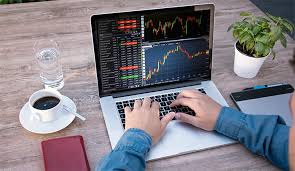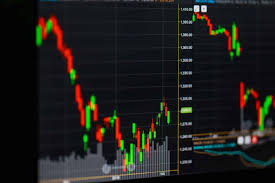Mastering Forex Algorithmic Trading Strategies and Insights 1929130875

In recent years, forex algorithmic trading Trading Asia has emerged as a leading platform for Forex enthusiasts, especially those pursuing algorithmic trading. This innovative approach to trading combines technology and finance to automate the decision-making process in currency trading. As the Forex market is known for its volatility and rapid changes, algorithmic trading provides traders with the tools needed to capitalize on market movements in real-time.
Understanding Forex Algorithmic Trading
Forex algorithmic trading involves using computer algorithms to execute trades automatically based on predetermined criteria. These algorithms can analyze market data and execute trades at a speed that is impossible for human traders. The benefits of algorithmic trading include improved efficiency, reduced emotional bias, and the ability to backtest trading strategies on historical data to assess their viability.
How Does Forex Algorithmic Trading Work?
The core of algorithmic trading lies in its ability to process vast amounts of data quickly. Traders develop algorithms that define specific criteria for entering and exiting trades, such as price movements, technical indicators, or news events. Once these algorithms are implemented through trading platforms, they can continuously monitor the market and execute trades automatically when conditions are met.
Key Components of Algorithmic Trading
- Market Data: Algorithms rely on real-time data feeds to make informed trading decisions. This data can include price quotes, volume, and economic indicators.
- Execution Logic: The algorithm’s execution logic defines the rules for making trades, including entry and exit points based on technical analysis or predefined rules.
- Risk Management: Effective algorithms incorporate risk management strategies to protect capital. This may involve setting stop-loss orders or limiting the size of trades.
- Backtesting: Before deploying an algorithm, traders typically backtest it using historical data to evaluate its performance against past market conditions.
Types of Forex Algorithmic Strategies
There are several strategies that traders can employ in Forex algorithmic trading. Each strategy has its own strengths and suits different trading styles:

1. Trend Following
Trend-following strategies involve buying currency pairs when they are trending upwards and selling them when they are trending downwards. Algorithms are designed to identify trends based on various indicators, such as moving averages or the Relative Strength Index (RSI).
2. Mean Reversion
Mean reversion strategies are based on the assumption that price movements will revert to their long-term mean. These algorithms identify overbought or oversold conditions and generate buy or sell signals accordingly.
3. Arbitrage
Arbitrage strategies exploit price discrepancies between different markets or brokers. Algorithms can quickly execute trades to capitalize on price differentials, often within milliseconds.
4. News-Based Trading
Algorithms can be programmed to analyze news events and economic releases that impact currency prices. By being the first to react to breaking news, these algorithms can seize profitable trading opportunities.
Advantages of Algorithmic Trading

The adoption of algorithmic trading in the Forex market offers several advantages:
- Speed: Algorithms can execute trades in fractions of a second, allowing traders to take advantage of fleeting market opportunities.
- Elimination of Emotions: Automated trading removes emotional biases that can lead to poor decision-making.
- Consistency: Algorithms can consistently apply the same rules and strategies without deviation.
- 24/7 Trading: Algorithms can operate continuously, monitoring the market and executing trades around the clock.
Challenges in Forex Algorithmic Trading
Despite the numerous advantages, algorithmic trading also presents several challenges:
- Technical Issues: Dependence on technology means that technical malfunctions or connectivity issues can lead to significant losses.
- Over-optimization: Traders may fall into the trap of over-optimizing their algorithms based on historical data, which may not translate to future performance.
- Market Dynamics: Algorithms may not adapt well to changing market conditions or unexpected geopolitical events.
Getting Started with Forex Algorithmic Trading
If you’re interested in entering the world of Forex algorithmic trading, here are some steps to get you started:
- Educate Yourself: Understand the basics of Forex trading, algorithm development, and market analysis.
- Choose the Right Platform: Select a trading platform that supports algorithmic trading to suit your needs. Make sure it offers features such as backtesting, real-time data integration, and access to trading APIs.
- Develop a Trading Strategy: Create and refine a trading strategy that aligns with your risk tolerance and market outlook.
- Backtest Your Algorithm: Test your algorithm using historical data to evaluate its performance and make necessary adjustments.
- Start Trading: Once you’re confident in your algorithm, deploy it in a live trading environment, beginning with small amounts to minimize risk.
Conclusion
Forex algorithmic trading presents a wealth of opportunities for traders looking to optimize their trading strategies. By leveraging technology, traders can enhance their decision-making processes and potentially increase their profitability. However, understanding the intricacies of algorithmic trading, including the risks involved, is essential for success. As the financial landscape continues to evolve, staying informed and adaptable will be key for anyone venturing into the world of algorithmic trading.

